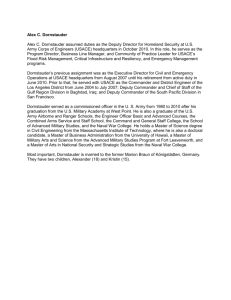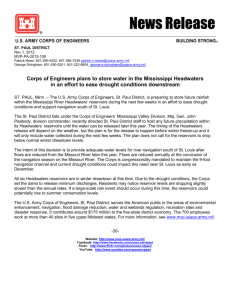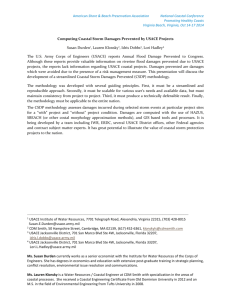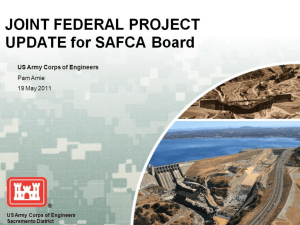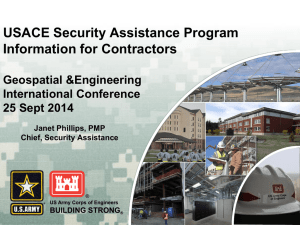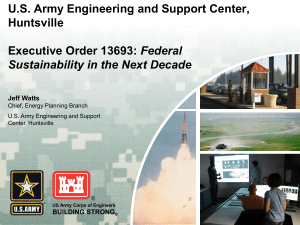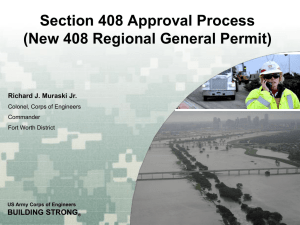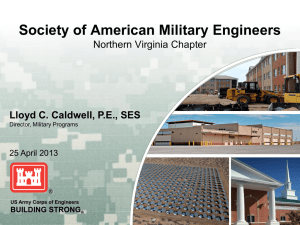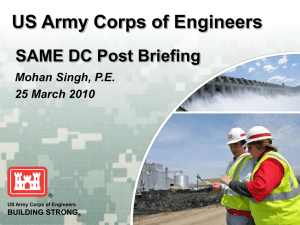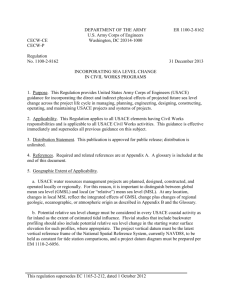Sea Level Change Considerations for Navigation and Storm
advertisement
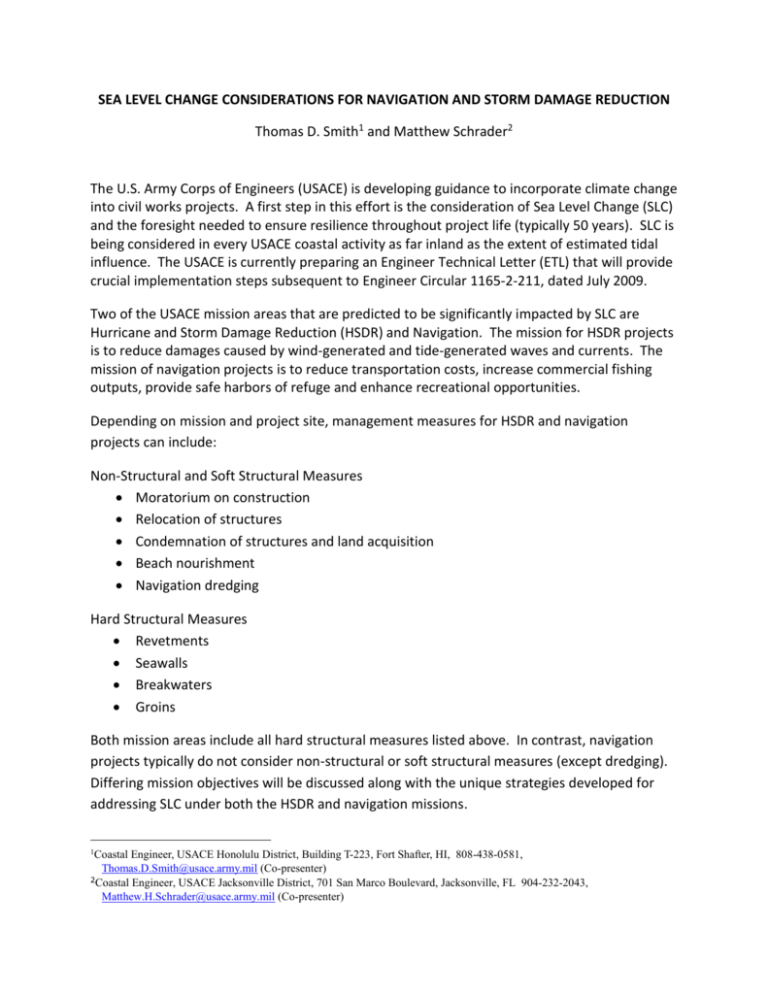
SEA LEVEL CHANGE CONSIDERATIONS FOR NAVIGATION AND STORM DAMAGE REDUCTION Thomas D. Smith1 and Matthew Schrader2 The U.S. Army Corps of Engineers (USACE) is developing guidance to incorporate climate change into civil works projects. A first step in this effort is the consideration of Sea Level Change (SLC) and the foresight needed to ensure resilience throughout project life (typically 50 years). SLC is being considered in every USACE coastal activity as far inland as the extent of estimated tidal influence. The USACE is currently preparing an Engineer Technical Letter (ETL) that will provide crucial implementation steps subsequent to Engineer Circular 1165-2-211, dated July 2009. Two of the USACE mission areas that are predicted to be significantly impacted by SLC are Hurricane and Storm Damage Reduction (HSDR) and Navigation. The mission for HSDR projects is to reduce damages caused by wind-generated and tide-generated waves and currents. The mission of navigation projects is to reduce transportation costs, increase commercial fishing outputs, provide safe harbors of refuge and enhance recreational opportunities. Depending on mission and project site, management measures for HSDR and navigation projects can include: Non-Structural and Soft Structural Measures Moratorium on construction Relocation of structures Condemnation of structures and land acquisition Beach nourishment Navigation dredging Hard Structural Measures Revetments Seawalls Breakwaters Groins Both mission areas include all hard structural measures listed above. In contrast, navigation projects typically do not consider non-structural or soft structural measures (except dredging). Differing mission objectives will be discussed along with the unique strategies developed for addressing SLC under both the HSDR and navigation missions. 1Coastal Engineer, USACE Honolulu District, Building T-223, Fort Shafter, HI, 808-438-0581, Thomas.D.Smith@usace.army.mil (Co-presenter) 2Coastal Engineer, USACE Jacksonville District, 701 San Marco Boulevard, Jacksonville, FL 904-232-2043, Matthew.H.Schrader@usace.army.mil (Co-presenter) Contact: Matthew Schrader, P.E. Coastal Engineer US Army Corps of Engineers Jacksonville District Coastal / Navigation Planning (904) 232-2043 – Matthew.H.Schrader@usace.army.mil Bios: Matt Schrader received his Bachelor’s of Science degree from the University of South Florida in Civil Engineering. While completing his degree he worked for the Southwest Florida Water Management District focusing on coastal ecological restoration. He received his Master’s of Science degree from the University of Florida in Coastal Engineering. Employed by the US Army Corps of Engineers since 2004, he currently serves as Jacksonville District’s Coastal Planning Technical Expert. Tom Smith is a subject matter expert on Federal shore protection and navigation projects in the Honolulu District of the US Army Corps of Engineers. Tom also worked at the Jacksonville District in the Plan Formulation section of Planning Division. He graduated with a bachelor’s degree in Civil Engineering from the Florida Institute of Technology and has a master’s degree from Texas A&M University.
